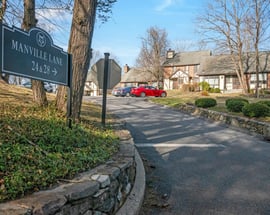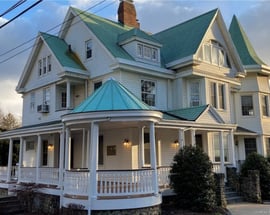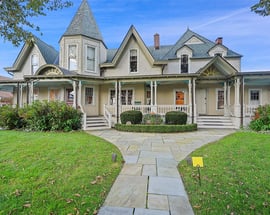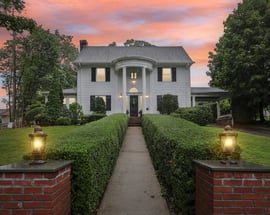The village’s relatively compact size at 1.8 square miles, means that its sidewalks get plenty of use. Residents enjoy local events and activities, meeting up with neighbors and friends at the local farmers market, and patronizing local shops, restaurants and cafes. The village, which at one time housed the headquarters of Reader’s Digest, is also known for its rich literary history and is home to numerous writers, editors and novelists who enjoy its close proximity to New York. An outstanding public library, a wealth of culture and community events and a closeness of community makes Pleasantville a desirable place to call home.
Pleasantville evolved with the later arrival of the New York Central Railroad. Prior to the 1800’s, Pleasantville was referred to as Leggett’s Corner, and then Clark’s Corner, named after local property owner Henry Clark. In 1828 the village’s present name was chosen by its postmaster, Henry Romer. By the 1870’s Pleasantville experienced rapid growth and was home to numerous businesses, including a pickle factory, and local farmland was replaced by residential subdivisions and stately Victorian homes for the burgeoning middle class. The village was incorporated on March 16, 1897, and Pleasantville soon evolved into a modern suburb of New York.
The village’s relatively compact size at 1.8 square miles, means that its sidewalks get plenty of use. Residents enjoy local events and activities, meeting up with neighbors and friends at the local farmers market, and patronizing local shops, restaurants and cafes. The village, which at one time housed the headquarters of Reader’s Digest, is also known for its rich literary history and is home to numerous writers, editors and novelists who enjoy its close proximity to New York. An outstanding public library, a wealth of culture and community events and a closeness of community makes Pleasantville a desirable place to call home.
Pleasantville evolved with the later arrival of the New York Central Railroad. Prior to the 1800’s, Pleasantville was referred to as Leggett’s Corner, and then Clark’s Corner, named after local property owner Henry Clark. In 1828 the village’s present name was chosen by its postmaster, Henry Romer. By the 1870’s Pleasantville experienced rapid growth and was home to numerous businesses, including a pickle factory, and local farmland was replaced by residential subdivisions and stately Victorian homes for the burgeoning middle class. The village was incorporated on March 16, 1897, and Pleasantville soon evolved into a modern suburb of New York.
The village’s relatively compact size at 1.8 square miles, means that its sidewalks get plenty of use. Residents enjoy local events and activities, meeting up with neighbors and friends at the local farmers market, and patronizing local shops, restaurants and cafes. The village, which at one time housed the headquarters of Reader’s Digest, is also known for its rich literary history and is home to numerous writers, editors and novelists who enjoy its close proximity to New York. An outstanding public library, a wealth of culture and community events and a closeness of community makes Pleasantville a desirable place to call home.
Pleasantville evolved with the later arrival of the New York Central Railroad. Prior to the 1800’s, Pleasantville was referred to as Leggett’s Corner, and then Clark’s Corner, named after local property owner Henry Clark. In 1828 the village’s present name was chosen by its postmaster, Henry Romer. By the 1870’s Pleasantville experienced rapid growth and was home to numerous businesses, including a pickle factory, and local farmland was replaced by residential subdivisions and stately Victorian homes for the burgeoning middle class. The village was incorporated on March 16, 1897, and Pleasantville soon evolved into a modern suburb of New York.







